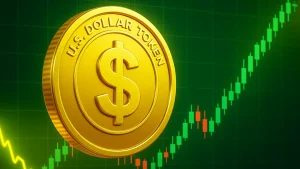The Promise and the Peril
This week, the International Monetary Fund didn’t just publish another explainer video about blockchain technology. They put the financial world on notice. In a three-minute clip shared on X, IMF officials delivered one of their strongest warnings yet: the same features that make tokenized assets so attractive to banks and fund managers could also amplify the kinds of market meltdowns we saw in 2010, when a trillion dollars briefly vanished from U.S. stock markets.
The numbers are compelling. IMF researchers believe near-instant settlement could cut asset-management costs by up to 20 percent. Real-world pilots at J.P. Morgan’s Onyx platform and Singapore’s Project Guardian are already proving it works. But here’s the catch—those same smart contracts that automate everything from interest payments to margin calls can turn a small problem into a cascading disaster. The IMF put it bluntly: without proper safeguards, failures could spread “like falling dominoes.”
The efficiency gains only materialize if different blockchains can actually talk to each other. If the industry splinters into incompatible systems, liquidity gets trapped in walled gardens, and all those promised savings evaporate. Looking back at Bretton Woods in 1944, Nixon closing the gold window in 1971, and the Basel reforms after 2008, the IMF’s message is clear: governments always step in when financial innovation reaches critical mass. This time won’t be different.
Regulators Are Already Moving
Policymakers aren’t waiting around. Within days of the IMF video, Brussels signaled it might expand its Pilot Regime for blockchain securities to include tokenized government bonds being tested on Deutsche Börse’s D7 platform. Over in Washington, the SEC is gathering industry input on whether tokenized money-market funds should use traditional transfer agents or run on purpose-built blockchains. Singapore has gone further—they’re already settling wholesale central-bank money against tokenized Treasury bills, proving that governments plan to be active players, not bystanders.
A pattern is emerging across jurisdictions: treat tokenized assets like traditional securities, then layer on new rules for round-the-clock programmable settlement. Cybersecurity stress tests, circuit breakers for smart-contract execution, and mandatory disclosure of oracle dependencies are becoming standard requirements from London to Sydney. The World Federation of Exchanges has added its own cautionary note, warning that tokenized stocks marketed to retail investors often lack voting rights and bankruptcy protections that come with actual equity ownership.
The Industry Is Betting Big on Regulation
Clearer rules aren’t scaring money away—they’re bringing it in. Europe now accounts for more than half of all tokenized fixed-income issuance globally, driven by deals from the European Investment Bank and Société Générale. Giants like BNY Mellon are building systems that let institutions manage both tokenized and traditional assets from a single screen, bridging blockchain rails with legacy SWIFT messaging. Even skeptics admit that eliminating settlement risk through atomic delivery-versus-payment could unlock billions in capital that’s currently tied up as buffers—a huge win when interest rates are elevated.
Joe Moglia, the former chairman of TD Ameritrade, made waves predicting that every financial asset will be tokenized within five years. That timeline might be ambitious, but the direction is undeniable. Regulators are setting boundaries, not slamming doors. Market participation is expanding, not shrinking. The real question now is whether global coordination can keep up with innovation fast enough to prevent exactly the kind of domino-effect crisis the IMF is warning about.




